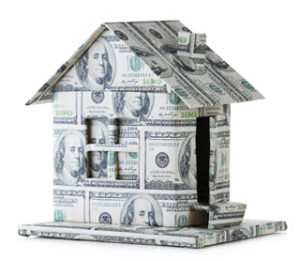 Home pricing is more of a science than an art, but many homeowners price with their heartstrings instead of cold, hard data.
Home pricing is more of a science than an art, but many homeowners price with their heartstrings instead of cold, hard data.
Smart sellers know that crunching the numbers is always the better route to an accurate home price. Here’s how they do it.
#1 They Avoid Overpricing
Homeowners often think that it’s OK to overprice at first, because — who knows? — maybe you’ll just get what you’re asking for. Although you can certainly lower an inflated price later, you’ll sacrifice a lot in the process.
The most obvious pitfall: A house that remains on the market for months can prevent you from moving into your dream home. Already purchased that next home? You might saddle yourself with two mortgages.
Also, continually lowering the price could turn off potential buyers who might start wondering just what is wrong with your home.
#2 They Don’t Expect Dollar-for-Dollar Returns on Investments
It’s easy for homeowners to stumble into two common traps:
- Conflating actual value with sentimental value — how much they assume their home’s worth because they lived there and loved the time they spent there.
- Assuming renovations should result in a dollar-for-dollar increase in the selling price — or more.
The renovation trap also sometimes kicks in – if you spend a lot on renovations on a house in a not-so-great neighborhood, wealthier buyera who might be interested in the upgraded home may dislike the neighborhood, and less affluent buyers may not be able to afford the asking price.
“Don’t buy the nicest home on the block” is common real estate advice for this reason.
That’s not to say that renovations aren’t worth it. You want to enjoy your home while you’re in it, right? Smart renovations make your home more comfortable and functional but should typically reflect the neighborhood.
Another culprit for many a mispriced home is online tools, like Zillow’s “Zestimate,” that prescribe an estimated market value based on local data. The estimate is often wildly inaccurate.
#3 They Use Comparable Sales (also Known as “Comps”)
The best pricing strategy? Consult a real estate agent, who will use something called comps (also known as “comparable sales”) to determine the appropriate listing price. They’re not just looking at your neighbors; they’re seeking out near-identical homes with similar floor plans, square footage, and amenities that sold in the last few months.
Once they’ve assembled a list of similar homes (and the real prices buyers paid), they can make an accurate estimate of what you can expect to receive for your home. If a three-bedroom bungalow with granite countertops and a walk-out basement down the block sold for $359,000, expecting more from your own three-bedroom bungalow with granite countertops and a walk-out basement is a pipe dream.
After crunching the data, they’ll work with you to determine a fair price that’ll entice buyers. The number might be less than you hope and expect, but listing your home correctly — not idealistically — is a sure way to avoid the aches and pains of a long, drawn-out listing that just won’t sell.
#4 They Adjust the Price When Needed
Once your home is on the market, you’ll start accumulating another set of data that will serve as the ultimate price test: how buyers react.
If there are no showings, it’s way too high. Lots of showings and no offer means you’ve marketed well — but it’s overpriced once people get inside.
When it comes to finding a buyer, pricing your home according to data — and the right data, at that — is crucial to making the sale.
Looking for more ideas to help speed up the sale of your home? Don’t miss our 6 tips to help you sell your home faster.



Leave a Reply